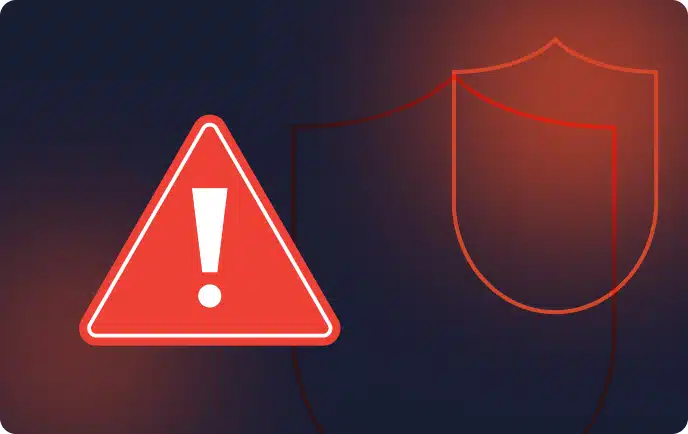What Is Domain Hijacking?
Domain hijacking refers to the unauthorized acquisition of a domain name by a third party, effectively taking control away from the rightful owner. This form of cyber attack can lead to significant disruptions, including loss of website functionality, email services, and potentially damaging the brand’s reputation.
Domain hijackers often exploit security vulnerabilities or use social engineering tactics to gain access to domain registration accounts, allowing them to change the registration details and transfer the domain to another registrar.
Once inside, the attacker can modify the domain’s DNS settings, redirecting traffic to a different server, or transfer the domain to another account, effectively seizing control. The original owners might remain unaware until they notice changes in their website’s traffic or functionality.
This is part of a series of articles about DNS attack
In this article:
- What Is the Impact of Domain Hijacking?
- Types of Domain Hijacking Attacks
- How to Prevent Domain Hijacking
What Is the Impact of Domain Hijacking?
Impact for Domain Owners
- Loss of business revenue: With the website being redirected or down, online sales and advertising revenue can drop significantly.
- Compromised customer trust: Customers may lose faith in the brand if they encounter security issues or cannot access services, potentially leading to loss of clientele.
- Recovery costs: Reclaiming ownership of a hijacked domain can be expensive and time-consuming, involving legal fees and negotiations.
- Search engine ranking impact: Unexpected changes in the website content or downtime can negatively affect search engine rankings.
Impact for Domain Users
- Exposure to malicious sites: Hijacked domains can redirect users to phishing or malware-laden sites, compromising their security.
- Loss of personal information: If the hijacked domain is used for phishing, users may inadvertently provide sensitive information to attackers.
- Disruption of services: Users relying on the domain for specific services, such as email or access to personal accounts, may experience disruptions.
- Trust issues: Users may become wary of using the site in the future, even after the domain has been recovered, fearing potential security risks.
Types of Domain Hijacking Attacks
Social Engineering
Social engineering attacks are a common method used in domain hijacking. Attackers manipulate individuals into divulging sensitive information, such as login credentials or personal data, which can then be used to access domain registrar accounts. These tactics often involve phishing emails or fake websites designed to mimic legitimate services, tricking users into unwittingly compromising their own security.
Registrar Security Breaches
Registrar security breaches occur when attackers exploit vulnerabilities in a domain registrar’s system to gain unauthorized access. These breaches can lead to mass hijackings if attackers manage to compromise the registrar’s entire database, allowing them to modify or transfer ownership of domains en masse. Such attacks underscore the importance of robust security measures on the part of domain registrars.
Expired Domain Registrations
Expired domain registrations present an opportunity for hijackers to legally take control of domains. If a domain owner fails to renew their domain registration before it expires, it becomes available for anyone to register. Hijackers monitor expiring domains, especially those with established traffic, and attempt to register them the moment they become available, often using automated tools.
How to Prevent Domain Hijacking
1. Choose a Reputable Domain Registrar
Selecting a reputable domain registrar is crucial for safeguarding your online presence. A reputable registrar offers robust security features, excellent customer support, and a history of reliable service.
Research and choose a registrar accredited by the Internet Corporation for Assigned Names and Numbers (ICANN), ensuring they comply with industry standards. Additionally, consider the registrar’s reputation in the industry, customer reviews, and the security measures they provide to protect against domain hijacking.
Reputable registrars typically offer advanced security options such as two-factor authentication, registry lock services, and timely alerts for any changes to your domain settings. They also have protocols in place for verifying identity before making any significant changes to your domain’s registration details.
2. Enable Two-Factor Authentication for Domain Administration
Two-factor authentication (2FA) adds an extra layer of security to your domain administration by requiring two forms of identification before access is granted. This typically involves something you know (like a password) and something you have (such as a code sent to your mobile device). Enabling 2FA ensures that even if an attacker obtains your password, they would still need the second factor to gain access to your domain account.
Implementing 2FA can significantly deter attackers since it complicates unauthorized access. Most reputable domain registrars offer 2FA options, so it’s advisable to enable this feature and use it consistently for all administrative access. This simple step can prevent many potential hijacking attempts, protecting your domain from unauthorized transfers or alterations.
3. Implement Email Security Solutions
Email security solutions are essential for protecting against phishing attacks, which are often used to initiate domain hijacking. These solutions can include spam filters, antivirus software, and phishing detection systems that identify and block malicious emails before they reach your inbox. By implementing robust email security, you can reduce the risk of falling victim to social engineering tactics that aim to steal login credentials.
Furthermore, training and awareness programs for staff and administrators about the dangers of phishing and how to recognize suspicious emails are crucial. Coupled with technical solutions, this human layer of defense can significantly enhance your domain’s security posture, making it more difficult for attackers to use email as a vector for domain hijacking.
Learn more in the detailed guide to email security
4. Enable Domain Registry Lock
Enabling a domain registry lock provides an additional security layer by preventing unauthorized changes to your domain’s registration and DNS settings. With this feature activated, any attempts to transfer your domain or modify critical settings must be manually verified and approved by you or your designated contact through direct communication with the registrar.
This extra verification step ensures that even if an attacker gains access to your domain management account, they cannot transfer the domain or alter its DNS settings without explicit approval. It’s an effective deterrent against quick hijack attempts, providing time to detect and respond to unauthorized access attempts.
5. Enable WHOIS Protection
WHOIS protection helps maintain the privacy of your domain registration details by masking your personal information in the publicly accessible WHOIS database. This service prevents attackers from easily obtaining your contact information, which they could use for social engineering attacks or to attempt identity theft.
With WHOIS protection enabled, your registrar displays their own contact information in the database instead of yours, while still forwarding any legitimate communications to you. This not only protects your privacy but also adds a layer of security against domain hijacking attempts that start with gathering personal information about the domain owner.
6. Keep Domain Contact Details Up-to-Date
Maintaining current contact details with your domain registrar is crucial for receiving timely alerts about any suspicious activity or necessary renewals. Ensure that your email address, phone number, and other contact information are up-to-date in the registrar’s records. This enables quick communication in the event of attempted hijacking or other security concerns, allowing you to respond promptly to protect your domain.
Regularly reviewing and updating your contact details, especially after any changes in your organization, ensures that you remain reachable in critical situations. This proactive approach helps safeguard against losing control of your domain due to outdated contact information, which could delay the recovery process in the event of a hijack.
Learn more about Bright Security’s web application security solutions




